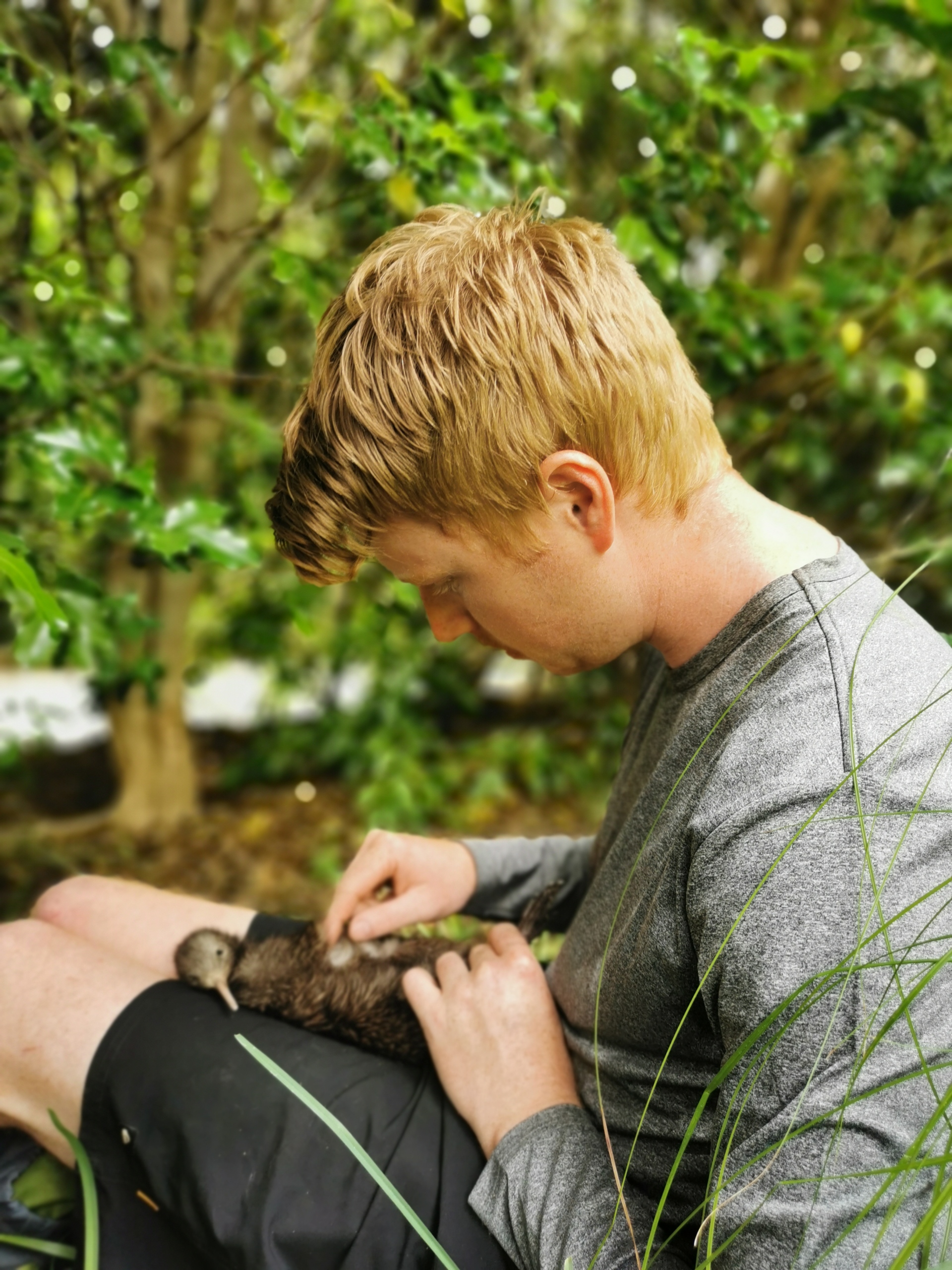Interim research results show Pataua North kiwi chicks have one of the highest survival rates recorded outside of predator free islands and fenced sanctuaries. New observations are also expanding current kiwi chick knowledge and challenging some commonly held ideas.

Kiwi Coast is amongst those supporting this research, as it is occurring within the strategic 45,000ha “kiwi corridor” of collaborative predator control reaching from Te Whara / Bream Head at the tip of the Whangarei Heads, through the Kiwi Link project and out to the Tutukaka Coast.
Article by researcher Carl Dowd:
Pataua North Landcare was granted a Wildlife Act Permit in 2023 to investigate the survival and dispersal of kiwi chicks. Ten adult male Northland brown kiwi are being monitored, the majority of which are original founders from earlier translocations. Monitoring the males through nesting then allows the subsequent monitoring of their chicks.
The 2023-2024 nesting season produced the first preliminary results which saw a 69% survival rate of kiwi chicks through to 1.2kg. At this weight, kiwi chicks are considered safe from stoats which are the cause of 95% of kiwi chick deaths where there is no pest control.
This is a significant result and is one of the highest survival rates seen outside of predator free islands and sanctuaries. This is credit to the excellent pest control work done throughout the Kiwi Link area, with support from Tahi, Kiwi Coast and Northland Regional Council.

Being able to work closely with Kiwi Coast has been vital to the success of this study and allows this work to best demonstrate the effectiveness of kiwi corridors and how they are beginning to work as we track the dispersal of kiwi chicks. Some kiwi chicks from the 2023-2024 season have been tracked dispersing 8km (and still going) across Kiwi Link passing through many different project areas.
We also made some interesting observations during the study which challenge some of the currently held perceptions about kiwi chick behaviour. This has included kiwi chicks staying closer to parents once leaving the nest than previously thought, with some chicks staying within their parents’ home range for up to 8 months before beginning to disperse. We also documented natural kiwi chick ‘crèches’, where chicks were living closely together in wetland areas.
Huge thanks to Lesley from Kiwi Coast and her Conservation Kiwi Dog, Yagi, who recently spent the day assisting to locate a kiwi chick who’d dropped his tiny transmitter and enable the research to continue.
These results indicate that the kiwi corridor is working and can also help to inform those carrying out pest control of how to target efforts for best effect. With the second season of monitoring now underway, and kiwi chicks hatching and leaving the nest, it will be interesting to see if further research confirms the results so far and what new information might be revealed next.


